The Furlough Scheme is changing on 1 July. Here are some #FurloughFacts
As of 21 June 2020, 9.2 million jobs were furloughed, almost a third of all UK employees. The furlough scheme becomes more flexible on 1 July and allows those furloughed to be brought back part time and with that, the hope of better things to come.
Here is some more detail and some #furloughfacts
- From 1 July furloughed employees can work part time and be furloughed part time. They will receive normal pay for hours worked and furlough rate for normal hours not worked. In their claims to HMRC, employers will need to report hours worked and the hours the employee would usually be expected to work.
- Employers have to contribute to furlough pay from 1 August. This starts with employer’s NICs and employer pension contributions. From 1 September employers must also contribute 10% of furlough pay and then 20% furlough pay from 1 October, subject to caps proportional to the normal hours not worked.
- Only those who started furlough on or before 10 June and were furloughed for at least 3 continuous weeks before 30 June are eligible (some exceptions apply, including maternity leave returners). It is not essential to have been furloughed on 10 June to qualify if the employee had a previous 3 week period of furlough (many employers have rotated staff on and off).
- Going forward there will be no minimum furlough period, though reports to HMRC must cover periods of at least a week. On that note, claim periods will no longer be able to overlap months.
- Flexible furlough agreements should be recorded in writing. Furlough agreements originally entered into will need to be varied, as previously the employee was not allowed to do any work for the employer.
- The scheme ends on 31 October 2020.
- Employers need to keep furlough records for 6 years – take care with this as it is a requirement easily missed!
Keep the guidance under review as it is always being tweaked, and do get in touch with any of us at @DraperLangLLP if you have any queries.

